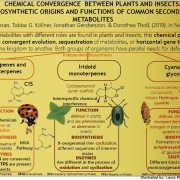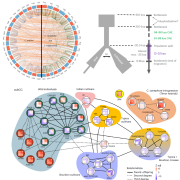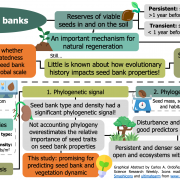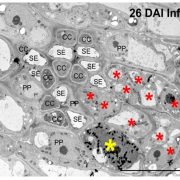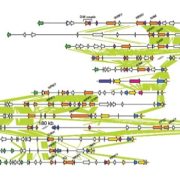Genome sequence of Striga asiatica provides insight into the evolution of plant parasitism (Curr Biol)
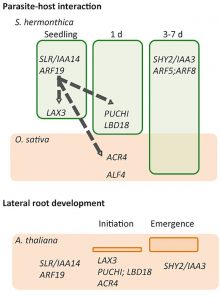 The parasitic plant Striga asiatica is both a serious agricultural pest and a fascinating plant oddity. Yoshida et al. report its genome sequence, which provides a glimpse into how a plant becomes an obligate parasite. Three key findings are the tremendous expansion of receptors for strigolactones (host-released signals that trigger Striga germination, leading to parasitism), the co-option of genes involved in lateral root development for the development of the pentrating haustorium, and evidence for the horizontal transfer of host genes into the Striga genome. They present a three-phase model of parasite evolution, which is consistent with the enhancement and contraction of key genes. (Summary by Mary Williams) Curr. Biol. 10.1016/j.cub.2019.07.086
The parasitic plant Striga asiatica is both a serious agricultural pest and a fascinating plant oddity. Yoshida et al. report its genome sequence, which provides a glimpse into how a plant becomes an obligate parasite. Three key findings are the tremendous expansion of receptors for strigolactones (host-released signals that trigger Striga germination, leading to parasitism), the co-option of genes involved in lateral root development for the development of the pentrating haustorium, and evidence for the horizontal transfer of host genes into the Striga genome. They present a three-phase model of parasite evolution, which is consistent with the enhancement and contraction of key genes. (Summary by Mary Williams) Curr. Biol. 10.1016/j.cub.2019.07.086



